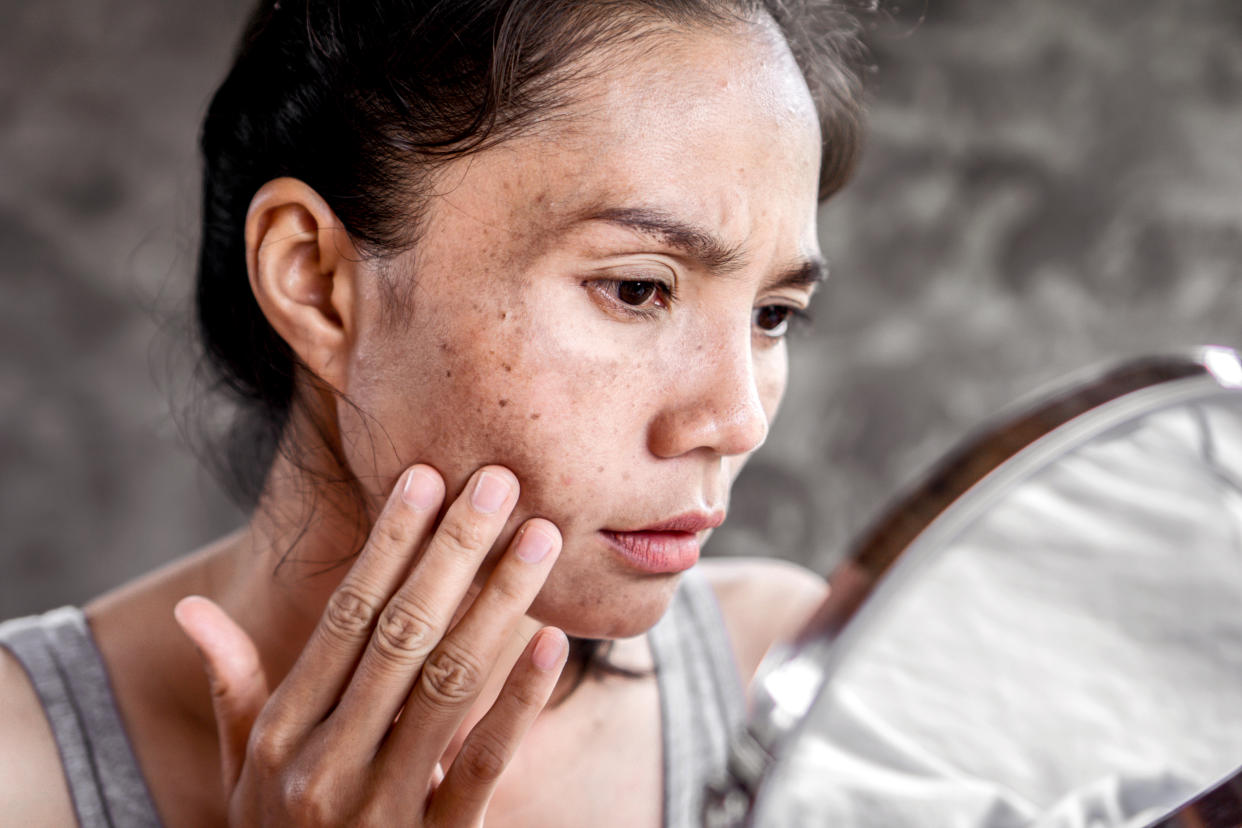Spot the signs of sun damage — and learn how to prevent it

As we grow older, changes to our skin — from fine lines to sagginess — are inevitable. It’s part of the natural aging process. But if you spent years basking in the sun without sunscreen or used tanning beds, chances are you’ll notice more changes to your skin compared to someone who’s been careful about protecting themselves from the sun’s harmful ultraviolet (UV) rays. That’s because sun damage — also known as photoaging — is responsible for 90% of visible changes to the skin.
How exactly does the sun damage our skin? And how can you determine that you have sun damage? Here, with insight from dermatologists, everything you need to know.
What does the sun do to our skin?
Sun damage primarily happens when your skin is exposed to UV radiation, which includes both UVA and UVB rays, Dr. Pooja Rambhia, a dermatologist based in New York City, tells Yahoo Life. “This occurs every time we encounter UV rays, which can penetrate through clouds and even windows,” she says. In other words, you’re exposed to it not just when you’re at the beach or a backyard barbecue, but also when you drive or sit near a window at the office.
While UVB rays harm the top or outermost layer of the skin, resulting in sunburns that increase our risk for skin cancers, UVA rays penetrate deeper into the dermis, damaging collagen and elastin. This leads to premature signs of aging, such as wrinkles, sagging and hyperpigmentation or uneven skin tone. “Additionally, UVA rays act as a carcinogen,” says Rambhia. “UV exposure generates free radicals, leading to oxidative stress and further cellular damage and inflammation.”
What are signs of sun damage?
Sun damage can show up in different ways, and it can be acute — meaning, you see the damage right away — or chronic, meaning it develops after prolonged exposure to UV rays. An obvious acute one is a sunburn, “red inflamed, tender skin that may blister and eventually peels off,” Rambhia says. “Tanning is also an early sign of sun damage; once exposed to significant UV radiation, your skin cells increase the production of pigment or melanin in order to protect the skin from further damage.”
Chronic signs of sun damage, on the other hand, are a result of cumulative UV exposure, or how much time you’ve spent in the sun over the course of your life. This includes hyperpigmentation — such as age spots on your hands, face and chest — and small visible blood vessels, which can appear near your nose or cheeks, along with dryness and loss of skin elasticity, notes Rambhia. “Additionally, fine lines and wrinkles also are in part due to cumulative sun exposure,” she says.
Chronic sun damage, she adds, can also cause actinic keratoses, or pre-cancerous growths that are rough and scaly, as well as other types of skin cancer.
Dr. Adam Friedman, a dermatologist based in Washington, D.C., says that cumulative sun damage can also cause skin to appear thin, crepey and rough in texture. The skin condition poikiloderma — uneven skin tone with reddish-brown patches typically found on the cheeks, upper chest or sides of the neck, is another sign. “All of these attributes result from chronic injury from sunburns,” he says.
How can sun damage be prevented?
The good news is sun damage can largely be prevented just by taking a few proper precautions. “To prevent sun damage, I recommend applying a broad-spectrum sunscreen with SPF 30 or higher, as well as seeking shade during peak sun hours of 10 a.m. to 4 p.m., wearing protective clothing when possible” — including hats and sunglasses — “and avoiding tanning beds at all costs,” says Friedman.
He’s also a fan of UPF clothing — densely woven fabrics that protect against UV rays — especially if you have to be outside during peak hours. “And of course remembering to reapply your sunscreen every two hours is crucial,” he adds.
If you’re already noticing the signs of sun damage, it’s worth visiting a dermatologist to go over the range of ways to treat it. These include topical retinoids — which lighten hyperpigmentation and soften fine lines by sloughing off dead skin cells and pushing new ones to the surface while stimulating collagen production — and laser treatments, which repair and regenerate skin cells, lightening age spots and reducing fine lines in the process.


